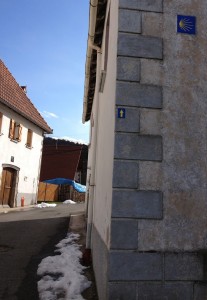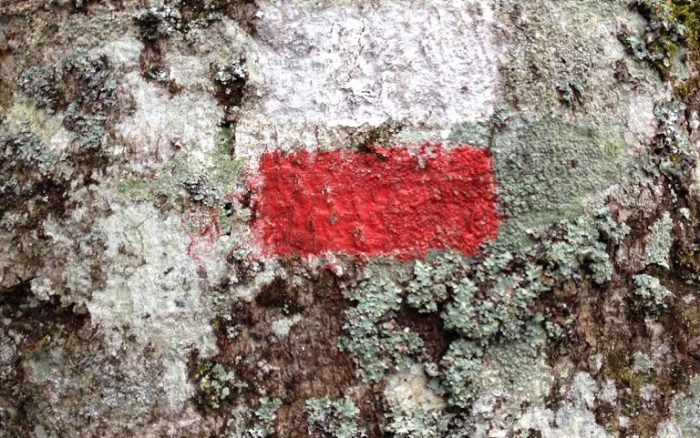I do not belong to this land. I feel it in my bones as I climb the paved paths of the Camino de Santiago through the Pyrenees, the path ever extending toward Galicia and onward to Santiago and the sea. The scenery is stunning; the Basque houses neat and uniform in design: bulky white with wooden shutters and rafters and tile roofs.
I ask myself what is different from how I feel at home? I know my own land, the forested path to our home that was once a trade route west, the dry, fragrant air of summer and moist forest breath of winter. This land smells different. Its forests are deciduous birch and oak, not the oak savanna and bay laurel of the Napa Valley.
Yet difference is part of pilgrimage. The word pilgrim has its roots in Middle English from Provençal pelegrin and Latin peregrinus, ‘foreign.’ Peregrine falcons were so named because they were caught full grown as passage hawks, not taken from the nest and raised (American Dictionary). During the time this trail was first formed (12th century), Provençal was the language of troubadours and cultured speakers of southern France, a language also called langue d’oc and spoken in an area not that far to the east of where we are now.
 |
| Arrow and shell pointing The Way
Pilgrims ascending. |
When we are out of our own territory, are we more likely to be observant, cautious, present? The word pilgrimage is associated with a journey to a sacred place, or a life’s journey. Is a period of being a foreigner, a wanderer, a stranger, actually helpful in becoming an individual? These are questions I contemplate while walking through dense, leafless birch forests that have not yet felt the warmth of spring.
The only time that I’ve been lost so far, and I was hopelessly lost for what seemed like forever, was when I quit being observant and followed the pilgrims in front of me. They misread the signs at a Y in the road, signs that were actually very clear. From there on I have been very alert for the little yellow arrows, shells, or the red and white stripes that beckon The Way.
Pilgrimages are full of metaphors. It is easy to see everything that way after a few miles, right or wrong. I met an older man on the trail who was limping heavily. He told me he was hiking the entire 500 miles with a prosthesis. “If I go slow I will make it,” he said.
I thought about this a while, wondering what his family said, along with a number of other practical questions, all of which are real stoppers if you pay too much attention to any them. But finally I thought, if he can do this, then surely I can as well. And I thought of all the reasons I give myself for other such pilgrimages in my life I do not embark upon for practical reasons.
There is an energy that builds as one walks a communal trail. I like to think that energy lingers for ages, renewed by each pilgrim walking it.
